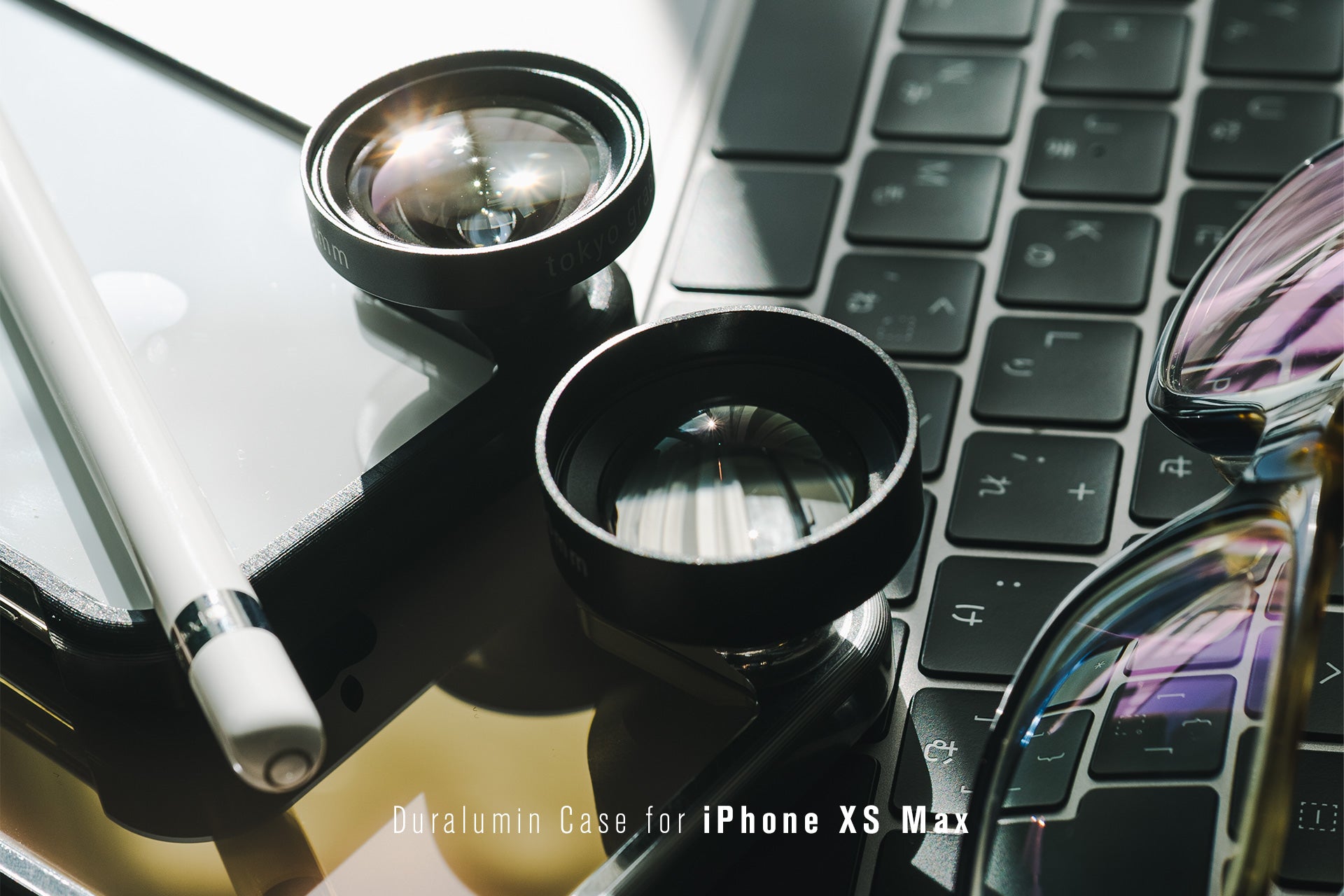
Shooting with iPhone 11 series, XS series, XR + FISH-EYE 220
When taking pictures with the FISH-EYE 220 attached to the iPhone 11 series, XS series, or XR, vignetting will occur in the four corners of the photographed image.
This vignetting is not caused by lens defects, but is caused by changes in the specifications of the cameras installed in the iPhone 11 series, XS series, and XR.
However, even if vignetting occurs, the FISH-EYE 220 does not lose its 220° angle of view. This time, we will explain how vignetting occurs on these iPhones, what we actually shot and compared with the iPhone 8 Plus and iPhone XR with the FISH-EYE 220 attached, and tips for editing to remove vignetting.

Changes to standard camera specifications for iPhone 11 series, XS series, and XR

| Focal length (35mm equivalent) | angle of view | |
|---|---|---|
| Conventional iPhone *1 | 28mm | 75° |
| iPhone 11 series, XS series, XR | 26mm | 80° |
*1 iPhone 7, 7 Plus, 8, 8 Plus, X values
The focal length of the standard camera of the iPhone 7, 8, 7 Plus, 8 Plus, X is 28mm in 35mm equivalent, and the angle of view is 75°. The standard camera has a focal length of 26mm (35mm equivalent) and an angle of view of 80° , making it possible to capture a wider range than the previous series.
In the next section, we will explain how the wide-angle of a standard camera, which is only 5°, leads to vignetting.

Mechanism of vignetting caused by wide-angle camera
-

[Fig.1] FISH-EYE 220 attached to iPhone 8 Plus -

[Fig.2] FISH-EYE 220 attached to iPhone 11 series, XS series, XR
| Part where vignetting occurs | The part that remains after trimming the vignetting |
| Part to be cropped with vignetting | Image captured by FISH-EYE 220 (image circle) |
The square part in the figure shows the range that the iPhone records in the photo .
In [Fig.1], the range that can be recorded by the conventional iPhone is within the gray area (the image captured by the FISH-EYE 220 = image circle *2 ), so the entire image captured by the FISH-EYE 220 is included in the photo. Images are recorded without vignetting.
Due to the widening of the angle of view, when the FISH-EYE 220 is attached to the iPhone iPhone 11 series, XS series, and XR in [Fig. I'm here. Since nothing is reflected outside the image circle and it becomes black, this is recorded in the photograph as vignetting.
Also, you can see from the figure that the FISH-EYE 220 does not lose the 220° angle of view that can be captured by trimming the vignetting. The vignetting does not reduce the visible area, but rather increases the visible area, making it possible to shoot without losing the 220° angle of view that was possible with a conventional iPhone.
*2 For more details about the relationship between the image circle and the recorded area, please refer to the previous post "Diagonal/Circumferential Fisheye Lens" .

Comparison when taking pictures
To see how much vignetting actually occurs, see the comparison between the iPhone 8 Plus with FISH-EYE 220 and an angle of view of 75° [Photo.1] and the iPhone XR with an angle of view of 80° [Photo.2]. please give me. You can check how much vignetting occurs due to the wide angle of the iPhone.
*Photos can be enlarged by clicking.
Vignetting occurs in the four corners of the iPhone XR [photo.2], and this vignetting occurs to the same extent on the XS and XS Max, which have the same spec standard camera.
Also, if you look at [Photo 3], which is an overlay of [Photo 1] and [Photo 2], there is a slight difference in the shooting position, but as shown in the previous figure, the image of the FISH-EYE 220 You can check that no corners are lost.
Vignetting is unavoidable when taking pictures with the iPhone 11 series, XS series, and XR FISH-EYE 220, but we will introduce how to deal with it in the "TIPS" below.
TIPS
By trimming the aspect ratio of the photo from 3:4 when shooting with an iPhone to 4:5 that can be posted on Instagram, it is possible to remove vignetting without losing the width and angle of view as much as possible.
[Picture 4] is an example of actual 4:5 trimming on an iPhone. Vignetting is removed by slightly cropping the top, bottom, and right sides of the image.
If you want to use the ratio at the time of shooting, you can trim the vignetting part while keeping the ratio of 3:4, or you can remove the vignetting by zooming the camera about 1.1 times when shooting.

Comparison during movie shooting
Please see the comparison of videos taken with the FISH-EYE 220 attached to the iPhone 8 Plus and iPhone XR. You can see in the video that the iPhone XR shoots with a slightly wider angle of view than the iPhone 8 Plus, but due to the specifications of the iPhone, the angle of view is narrower when shooting video than when shooting still pictures, so the image circle is wider. The video shooting range does not reach the outside, and vignetting does not occur on iPhone XS, XS Max, and XR .
[Video] Comparison of video shot with FISH-EYE 220 on iPhone 8 Plus and iPhone XR







